…As a bit of a preface, I’ve been reading Christopher Brookmyre’s Jack Parlabane series for years. Back when I was doing my junior year abroad in London, and I had no money and a bag of potatoes to eat, I stumbled across the first book, Quite Ugly One Morning at my local library, and the utterly crazy twists and turns of the plot kept me spellbound.
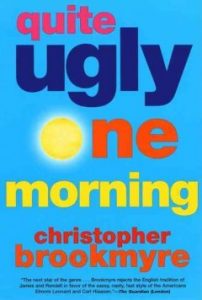 For those who haven’t discovered this delightfully smart, insightful, and occasionally, startlingly visceral series, the main character is a journalist named Jack Parlabane, who makes his career by taking on the stories that one else even believes exists, and gets his scoops by breaking in, snooping, and hacking the most seemingly impossible places. And while all these hijinx are exciting, and some of the situations are wildly, almost absurdly outlandish, what I love is that Christopher Brookmyre makes all his characters real, and flawed (sometimes appallingly so), and, generally lovable (this usually doesn’t extend to his villains, who can be pretty appalling, in the best of ways.
For those who haven’t discovered this delightfully smart, insightful, and occasionally, startlingly visceral series, the main character is a journalist named Jack Parlabane, who makes his career by taking on the stories that one else even believes exists, and gets his scoops by breaking in, snooping, and hacking the most seemingly impossible places. And while all these hijinx are exciting, and some of the situations are wildly, almost absurdly outlandish, what I love is that Christopher Brookmyre makes all his characters real, and flawed (sometimes appallingly so), and, generally lovable (this usually doesn’t extend to his villains, who can be pretty appalling, in the best of ways.
One of the things I love most about this series is that fact that I have massively disagreed with Brookmyre on a lot of aspects of this series (and if you’ve read it too, I will be delighted to discuss at length). He has made me so unhappy and so angry that I’ve wanted to challenge him to a duel–but even I have to admit that his choices have made the books better, and richer, and kept the trajectory of the series moving forward with consistent energy. Moreover, they are choices that fly in the face of a lot of prevailing stereotypes and gender assumptions, and I kind of have to respect that, even if I hate the outcome grandly.
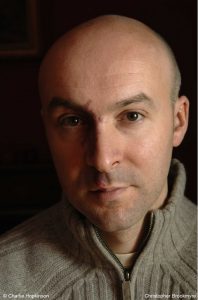
…until I found out, in the latest book (which is terrific, by the way, go read it), which is the eighth in this series…that Jack Parlabane is blonde.
For the past eleven years, I have been picturing him with black hair. No. Scratch that. For the past eleven years, he has had black hair.
Now, part of this, I am sure, is because David Tennant* read the audiobook of the series opener, and knowing what Tennant looked like probably influenced my idea of the character looked like. Maybe I was just willfully blind to any previous description, and I just noticed now something I had missed. But none of those obscures the absolute shock I felt when I read that. Like someone I knew personally had somehow betrayed me–not Brookmyre, but his fictional character, Parlabane.
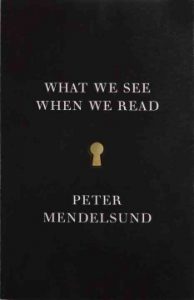 There have been some fascinating pieces written about the way we imagined literary characters. One of my favorites is Peter Mendelsund’s “What Does Anna Karenina Look Like?”, an excerpt from his eye-opening What We See When We Read. Some of the things that he mentions in the piece is that our emotional attachment to characters can make us feel like we know them, even if we can’t tell you what their nose looks like…or even if we’ve never imagined their nose. Or that our clearest conception of a character is based on the sketchiest of details provided to us by the author.
There have been some fascinating pieces written about the way we imagined literary characters. One of my favorites is Peter Mendelsund’s “What Does Anna Karenina Look Like?”, an excerpt from his eye-opening What We See When We Read. Some of the things that he mentions in the piece is that our emotional attachment to characters can make us feel like we know them, even if we can’t tell you what their nose looks like…or even if we’ve never imagined their nose. Or that our clearest conception of a character is based on the sketchiest of details provided to us by the author.
There are even websites that use police composite technology to create sketches of characters. Brian J. Davis has a whole site devoted these sketches. And, frankly, very few of them look like the people I know in my head. Part of this is, no doubt, because police sketches always look a little…weird:
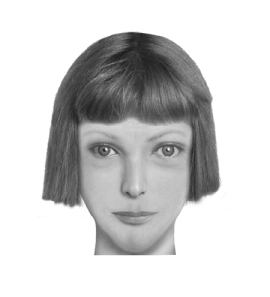
But it also makes me wonder…when and how precisely do characters become something different in our heads than what was in the authors’? What makes our relationship to an imaginary entity so real that we believe that we know them inside and, specifically, out? By what wizardry is that relationship created?
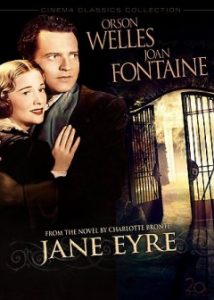 And what about the characters for whom we don’t have a good understanding? I’ll be honest, I couldn’t really describe what Rochester looks like. He is one of my favorite characters, I’ve read him countless times, I know his soul; but I couldn’t really describe his looks to you well enough that you would recognize him on the street. I’ve watched a whole slew of adaptations of Jane Eyre, and seen Rochester portrayed by everyone from Orson Welles (umm…) to Toby Stephens (hooray!), but none of them look like Rochester to me. Because I don’t know what he looks like.
And what about the characters for whom we don’t have a good understanding? I’ll be honest, I couldn’t really describe what Rochester looks like. He is one of my favorite characters, I’ve read him countless times, I know his soul; but I couldn’t really describe his looks to you well enough that you would recognize him on the street. I’ve watched a whole slew of adaptations of Jane Eyre, and seen Rochester portrayed by everyone from Orson Welles (umm…) to Toby Stephens (hooray!), but none of them look like Rochester to me. Because I don’t know what he looks like.
But that doesn’t mean I appreciate the character any less–or any more–for that. He is too real to me for his looks to matter. Just as Parlabane is so real for me that his looks matter enormously.
I don’t have any good answers or explanations here, dear readers. I am still grappling with this whole blonde thing to be honest with you. But it’s got me thinking about what is it about fictional characters that make them real and tangible in our lives, and why that is. And if anything, it’s made me appreciate those characters–and the authors responsible for them–even more.
Have you ever dealt with finding out your favorite character was different than you pictured, dear reader–be it blonde or otherwise? How did you react?
*We don’t have this particular recording at the Library, but I cannot recommend David Tennant as an audiobook reader more highly.
